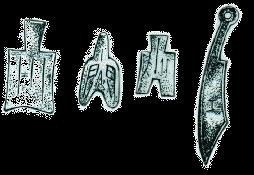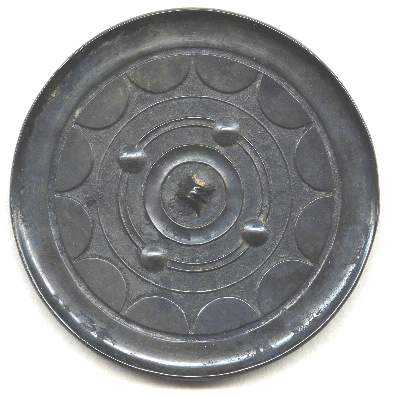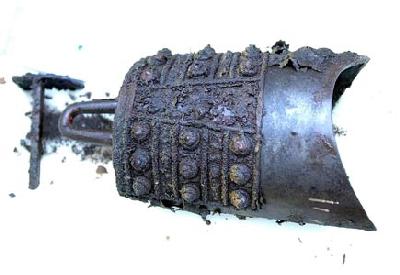 |
| Various shapes of coins of the Warring States
Period |
With the demolishment of old traditions and
systems and the establishment of new ones, greater social changes took place
during the Warring States Period (476-221BC). In the domain of thoughts, an
unprecedented hundred schools of thoughts contended. All statesmen noticed these
changes and took the initiative to carry out political reforms and expand their
power. The historical trend of unification became increasingly visible.
After years of annexation among the vassal
states, only seven states, plus a few smaller ones, were left during the Warring
States Period. The Seven Powers of the Warring States Period, namely the Qi,
Chu, Yan, Han, Zhao, Wei and Qin, gradually conquered the smaller
powers.
 |
| A bronze mirror of the Warring States
Period |
The Warring States Period can be divided into
three stages. The first stage began in 475BC and ended in 338BC, when the king
of the Zhou, the last king of the Shang Dynasty, was killed. During this period,
many statesmen were eager to strengthen their states through reform, such as Li
Kui in the Wei, Wu Qi in the Chu and later Shang Yang in the Qin. This was a
comparatively stable period.
Agriculture, industry and economy developed
during the Warring States Period. The increasing popularity of iron tools marked
a revolutionary innovation of production tools and the development of social
productive forces.
 |
| Chime bell of the Warring States Period unearthed in
Jiuliandun tomb of Hubei Province |
The second stage
began from 338BC and ended in 288BC. During this period fierce fighting
persisted among the seven powers as each tried to annex its neighbor. In 288BC,
the Qi and Qin became the Western Empire and Eastern Empire. The wars escalated.
In 284BC, six states were united and launched a war against the Qi.
The third stage was from 284 to 221BC. In
221BC, the Qin unified the country after conquering its six rival states, ending
the turbulent Warring States Period.



